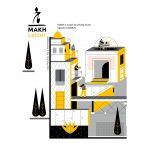

Navigating the Challenges of Business-Design Collaboration
Introduction
When discussing the intricacies of a bilateral working agreement, it is crucial to explore the issues from the perspectives of both designers and clients. Collaboration between the worlds of business and design, while mutually beneficial, often presents challenges that require empathy and cooperation from both parties. In this article, we explore the intrinsic relationship between designers and the business world, shedding light on the challenges they face and highlighting the key to a successful collaboration.
Designer-businessman collaborations, despite their challenges, have immense potential for growth and success. By empathetically addressing concerns, establishing effective communication channels, and nurturing a win-win mindset, designers and clients can forge stronger partnerships. Join us in this article as we seek to answer essential questions and propose strategies to overcome obstacles in designer-businessman collaborations.
- What are the most important reasons for the non-cooperation of designers with employers?
- How to define a correct and stable bond for this type of cooperation?
- How to establish a win-win relationship?
- Is it possible to define an advantage of this cooperation that ignores its challenges?
Stay with us to find the answers to these questions in this article. But first, let’s look at the issue in detail from the perspective of both sides of the contract and address it.
Design
Within the realm of design, passionate designers strive to create meaningful contributions that positively impact society and individuals’ lives. Their goal is to offer services and products that enhance the quality of life, providing innovative solutions to everyday challenges. However, realizing this vision necessitates the implementation and delivery of their ideas through the collaborative efforts of industry and business partners.
Designers understand that their ideas and thoughts must be effectively implemented and shared with the public through industry or business intermediaries. It is through this collective effort that their concepts can truly come to life and make a meaningful impact on people’s lives. Consequently, designers are faced with the challenge of engaging with business owners, presenting their ideas, and transforming them into tangible products or services. Sadly, many ideas never see the light of day, falling victim to the fear and concerns that plague designers. However, the key to overcoming these hurdles lies in presenting well-crafted plans to businesses, securing their investment and support for production.
Let’s see what are the main reasons why an idea is not accepted by business owners. Or that the designer cannot present his idea as a proposal?
They may consider themselves the sole proprietors of their designs, resistant to external input. While this inclination can be partially justified, the reality is that commercializing an idea often requires adaptation to align with market demands and industry mechanisms. The original concept must undergo changes to ensure successful implementation.
In their quest to persuade clients, designers commonly make a crucial mistake: defending their designs solely with design literature and principles, oblivious to the need for industrialization. Presenting plans adorned with design jargon and unfamiliar illustrations can be off-putting to employers. It is crucial to acknowledge that the industry operates within its own language, focusing on production, finances, and the precise determination of costs and returns. Many designers are unfamiliar with this business-oriented discourse.
To effectively convey a compelling idea, designers must articulate it in the language of business. An idea’s true potential lies in its ability to be understood within the context of the supply chain and its impact on the market. Designers must accept that, for their concepts to flourish and evolve, adjustments are necessary to align with societal needs and market dynamics. At this point, the designer is trying to convince the client to produce the idea with design literature. There are two common mistakes that most designers make:
- Defense of the design with design literature in line with its industrialization!
- Presenting the idea with design literature and illustrations that are unfamiliar to employers.
It must be accepted that the industry has its own special language as production and financial ones in which cost and income are specified. Literature that many designers are unfamiliar with.
In fact, a good idea should be explained to the other party with business literature and graph. An idea whose effect has been seen in the supply chain and its implementation in the market.
The designer should accept that in order for the thought he created to grow and develop, he should make changes in it according to society and the market.
Changes that express their values and advantages with the language of business, not with the language of design.
Business
In today’s fiercely competitive business landscape, companies strive for sustainable growth and development within their strategies. The initial step involves designing a robust business model that can adapt, evolve, and effectively compete with both domestic and international brands over time. To achieve continued progress, business owners must continuously introduce fresh competitive advantages to the market, enabling them to capture a larger audience. With rapid technological advancements and shifting consumer lifestyles, businesses must possess the agility to identify emerging needs and respond promptly with innovative products and services.
Businesses undoubtedly rely on the ingenuity of creative minds and the generation of novel ideas to provide innovative solutions to the market. These solutions serve as their stronghold, ensuring they remain competitive amidst fierce rivalries. Each brand operates within its unique framework, anchored by a vision, mission, and strategic goals. Ideas play a pivotal role in shaping their development trajectory, allowing businesses to align their progress with their strategic objectives. However, challenges arise when the pace of market growth surpasses that of the business itself, hindering the acceptance of ideas that resonate with evolving consumer demands. To succeed in a competitive market, businesses must embrace new ideas that address societal needs, discard preconceived notions, and overcome the fear of taking calculated risks to propel progress. Furthermore, fostering flexibility and openness within the organizational culture enables businesses to adapt and adopt new perspectives.
Effective business leaders prioritize ideas based on a comprehensive understanding of market dynamics, selecting those that offer lower risks and higher returns on investment. Carefully curated ideas, driven by market insights and customer needs, provide a fresh and enriching experience. However, many brands encounter challenges due to a lack of a well-defined brand image and a clear strategic framework. Without a defined brand identity and a cohesive strategy, designers struggle to provide solutions that align with the brand’s identity. Managers who solely rely on established frameworks and past experiences find it challenging to address market needs and anticipate future trends. It is imperative to develop a comprehensive strategy document that encompasses the brand book and design guidelines, enabling designers to deliver efficient and effective solutions.
Achieving sustainable growth and development in today’s competitive business world requires a commitment to innovation and strategic thinking. By cultivating an environment that fosters creativity and embracing new ideas, businesses can successfully adapt to evolving market dynamics. Strategic prioritization, driven by market insights, empowers companies to select ideas that offer optimal risk-reward ratios. Clear brand identity and strategic frameworks provide designers with a solid foundation for delivering tailored solutions that align with the brand’s vision. With a forward-thinking mindset and a commitment to continuous improvement, businesses can navigate the challenges of today’s market and position themselves for long-term success.
BUSIGN
BUSIGN, a portmanteau of “business” and “design,” represents a transformative approach that leverages the strengths of both disciplines to foster cooperation and create synergy. It involves developing a deep understanding of each other’s expertise and perspectives to reach a common ground. By embracing BUSIGN, businesses, and designers can bridge the gap between their worlds, protect mutual interests, and unlock the potential for growth and innovation.

A key element in fostering successful cooperation is developing a comprehensive understanding of each other’s domains. By actively listening and empathizing, parties can overcome differences and find common ground for effective dialogue and collaboration. BUSIGN recognizes the importance of appreciating both business and design perspectives, creating an environment where the interests of both parties are valued. This mutual understanding paves the way for effective interactions and the synthesis of ideas that can drive profitability and growth.
A BUSIGNER, a practitioner of BUSIGN, is equipped with a deep understanding of design principles, ideation methods, customer needs, and the intricacies of business development. They act as a bridge between the worlds of business and design, recognizing the beauty and efficiency of a product alongside its profitability. Drawing insights from strategy documents, brand identity, and market needs, BUSIGNERS strives to create novel experiences for the target audience, resulting in financial success for the company. They navigate the complexities of the market, identifying competitive advantages and infusing ideas that fuel business growth.

In an era marked by rapid industry growth and technological advancements, BUSIGN becomes invaluable for both designers and business managers. By integrating business and design knowledge, BUSIGNERS help overcome obstacles that hinder the commercialization of new ideas. They understand the dynamics of the market and possess the expertise to develop ideas that resonate with customers, generating faster returns on investment. With BUSIGN, businesses can embrace innovation, adapt to evolving consumer demands, and seize new opportunities for success.
BUSIGN represents a powerful approach that unites the worlds of business and design, fostering cooperation and synergy. By understanding each other’s expertise and perspectives, designers and business managers can collaborate effectively, driving innovation and profitability. BUSIGNERS play a crucial role as bridge builders, infusing ideas that align with market needs and enhance the brand’s identity. As industries continue to evolve and new businesses emerge, embracing BUSIGN, becomes increasingly vital for sustainable growth and competitive advantage. By harnessing the potential of BUSIGN, businesses can navigate the ever-changing landscape and unlock new possibilities for success.

By: Majid Ahmadi Khoshbakht
CEO of MAKH




